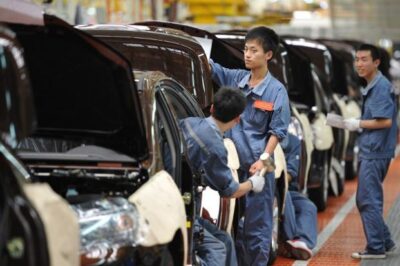China’s retail sales of passenger cars reached 1.386 million units in February, a year-on-year increase of 26% but a month-on-month decline of 22.8%, and the total sales over the first two months reached 3.179 million units, up 1.2% year-on-year, according to data released by the China Passenger Car Association.
Due to the early occurrence of the Spring Festival (January 29), the implementation of automobile scrappage renewal and trade-in subsidy policies, and automakers proactively stabilizing price expectations, the industry’s price war has significantly cooled compared to previous years, said the association.
Data indicates that the promotional intensity in the passenger car market was 5.7 percentage points in 2023, narrowed to 3.2 percentage points in 2024, and further narrowed in January-February 2025, with fuel vehicle pricing remaining particularly stable, it said.
In addition, the association noted that the macroeconomic environment has improved beyond expectations, consumer confidence is gradually recovering, and continued marketing efforts by automakers during the Spring Festival, combined with a low base effect from the previous year, contributed to a strong start for the auto market in February 2025.
This performance was significantly better than the post-holiday slump in 2024, laying a solid foundation for stable market operations throughout the year, it noted.
The rapid weekly increase in new energy vehicle (NEV) penetration is becoming the main driver of post-holiday recovery in the passenger car market.
Data shows that retail sales of NEV passenger cars reached 686,000 units in February, a 79.7% year-on-year increase but a 7.8% decline from the previous month. The cumulative retail sales for January-February stood at 1.43 million units, up 35.5%.
However, the domestic retail penetration rate of NEVs in February fell below 50% to 49.5%.
In response, Cui Dongshu, Secretary-General of the association, emphasized that since 2020, NEV penetration rates have typically peaked between July and September, while they tend to be lower at the end and beginning of each year. This seasonal fluctuation is closely related to the current stage of China’s automotive industry development.
Among Chinese car buyers, first-time buyers tend to purchase fewer vehicles during the hot summer months, whereas the proportion of trade-in buyers is relatively higher during that period, and since trade-in buyers contribute more significantly to NEV sales, this trend influences overall market dynamics, he further noted.
Looking ahead to March, the association expects continued market momentum with strong month-on-month growth in production and sales.
Three key factors are expected to drive this growth: the post-Spring Festival period is a crucial time for automakers to launch new models; various provinces and cities have introduced consumption stimulus policies in response to the national push for consumer spending; and the recent low prices of lithium carbonate and other materials provide manufacturers with opportunities to optimize NEV cost structures and accelerate product iterations, the association said.
In 2025, automotive industry subsidies and incentives have reached record highs, becoming a key driver in promoting overall market prosperity and accelerating NEV adoption among the general public, it added.
According to the association, China’s automotive policy subsidies hit record highs: scrappage renewal and trade-in policies are expected to generate 15 million transactions, with an estimated subsidy release of 220 billion yuan; NEV production and sales are projected to reach 16 million units, contributing 2 trillion yuan in sales revenue; the vehicle purchase tax exemption policy is entering its final year, expected to provide about 200 billion yuan in benefits; and the total subsidy scale is estimated to exceed 400 billion yuan, accounting for 8% of the 5 trillion yuan total auto sales revenue, according to the association.

